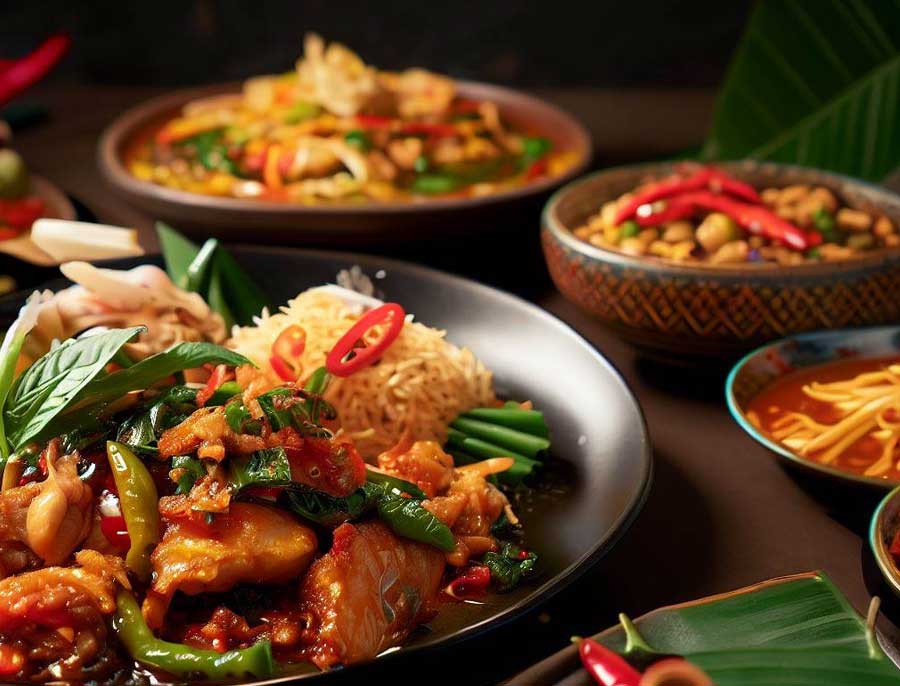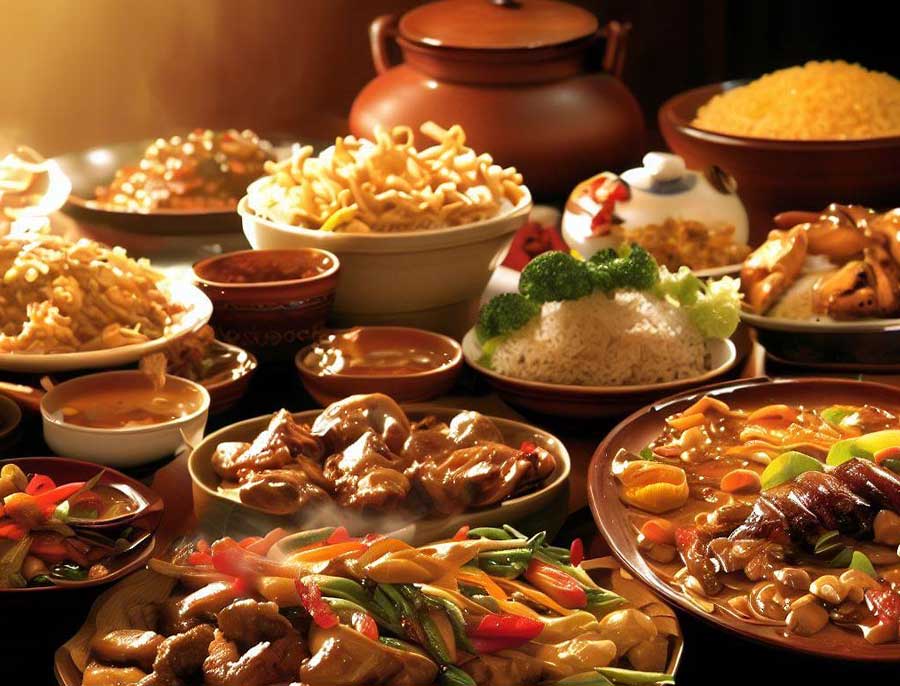Exploring the Distinct Differences Between Thai and Chinese Cuisine
Two of the most prominent and beloved cuisines in the world are Thai and Chinese. Each offers a unique, flavourful experience that tantalises the taste buds and reflects the rich heritage of its people. Let’s take a deep dive into the difference between Thai and Chinese food, exploring the ingredients, flavours, cooking methods, and cultural influences that set them apart.
Thai Cuisine: What Makes it Unique
Thai cuisine is renowned for its harmonious blend of flavours, often described as a “symphony” that balances sweet, salty, sour, and spicy notes. Here are some key characteristics of Thai food:
1. Flavour Profile: Thai dishes are known for their bold and vibrant flavours. They often incorporate a combination of sweet (from palm sugar), salty (from fish sauce or soy sauce), sour (from lime or tamarind), and spicy (from chilli peppers).
2. Herbs and Spices: Thai cuisine relies heavily on aromatic herbs and spices like lemongrass, galangal, kaffir lime leaves, and Thai basil. These ingredients contribute to the distinctive Thai aroma and taste.
3. Coconut Milk: Coconut milk is a staple in many Thai dishes, adding a creamy and slightly sweet element to curries and soups. Green, red, and yellow curries are popular examples of coconut-based Thai dishes.
4. Rice: Rice is a fundamental component of Thai cuisine, served with nearly every meal. Sticky rice and jasmine rice are the most commonly used varieties.
5. Street Food Culture: Thailand is famous for its vibrant street food culture. Whether it’s Pad Thai, Som Tam (green papaya salad), or Satay skewers, street vendors serve up an array of delectable dishes that showcase the diversity of Thai cuisine.
6. Regional Variations: Thai cuisine varies by region. The northern region, for example, is known for its hearty dishes like Khao Soi, while the south offers fiery and seafood-rich cuisine like Tom Yum Goong.
Chinese Cuisine: Diversity is Key
Chinese cuisine is incredibly diverse, with regional variations that reflect the vastness of the country and its deep-rooted culinary traditions. Here are some distinguishing features of Chinese food:
1. Regional Diversity: China’s vastness is reflected in its cuisine. There are eight major regional cuisines, including Sichuan, Cantonese, Hunan, and Shandong, each with its unique flavours and cooking techniques.
2. Staples: Rice and noodles are staples in Chinese cuisine, and they are often served as the foundation for meals. Steamed rice, fried rice, and a variety of noodles, such as lo mein and chow mein, are widely enjoyed.
3. Sauces and Seasonings: Chinese cooking often involves a wide range of sauces and seasonings, including soy sauce, oyster sauce, hoisin sauce, and black bean sauce. These provide depth and complexity to dishes.
4. Cooking Techniques: Chinese cuisine boasts a rich array of cooking techniques, from stir-frying and deep-frying to steaming, braising, and roasting. The use of a wok is a hallmark of Chinese cooking.
5. Dim Sum: Dim Sum is a beloved tradition in Chinese cuisine, consisting of small, flavoursome dishes like dumplings, buns, and rolls, often served with tea. Dim Sum restaurants offer a delightful dining experience.
6. Spices and Aromatics: Sichuan cuisine, in particular, is famous for its use of numbing Sichuan peppercorns and fiery chilli peppers. These ingredients create a distinctive and spicy flavour profile.
Cultural Influences On Thai and Chinese Cuisine
The differences between Thai and Chinese food are not limited to ingredients and cooking techniques; they also stem from cultural influences and historical factors:
1. Cultural Diversity: Thailand’s cuisine is influenced by a mix of indigenous traditions, as well as influences from neighbouring countries such as India, Cambodia, and Malaysia. Chinese cuisine, on the other hand, is deeply rooted in thousands of years of history and has influenced culinary traditions around the world.
2. Buddhist Influence: Thailand’s dominant religion, Buddhism, has played a significant role in shaping Thai cuisine. Buddhist monks have a strong influence on the vegetarian and vegan offerings in Thai food.
3. Foreign Trade: China’s history of trade along the Silk Road and its maritime routes allowed for the exchange of ingredients and culinary techniques with other cultures, resulting in a rich and diverse culinary landscape.
The Difference Between Thai and Chinese Food: Popular Dishes
Let’s explore some popular dishes from both cuisines. This will really highlight the difference between Thai and Chinese food:
Thai Dishes:
- Pad Thai: Stir-fried rice noodles with prawns or chicken, flavoured with tamarind, fish sauce, and lime.
- Green Curry: A coconut milk-based curry with green chilli peppers, Thai basil, and a variety of vegetables and proteins.
- Som Tam: A spicy green papaya salad with lime, fish sauce, peanuts, and chillies.
- Tom Yum Goong: A hot and sour prawn soup flavoured with lemongrass, kaffir lime leaves, and galangal.
Chinese Dishes:
- Peking Duck: A famous dish featuring crispy, roasted duck served with thin pancakes, hoisin sauce, and julienned vegetables.
- Kung Pao Chicken: A stir-fry dish with chicken, peanuts, and vegetables in a spicy, slightly sweet sauce.
- Dim Sum: A variety of bite-sized dishes including dumplings, steamed buns, and rolls served with tea.
- Mapo Tofu: A spicy Sichuan dish made with tofu, minced pork, chilli bean paste, and Sichuan peppercorns.
Celebrating Diversity Through Food
Thai and Chinese cuisines are both culinary treasures that offer unique and delightful dining experiences. While Thai food is known for its harmonious blending of sweet, salty, sour, and spicy flavours, Chinese cuisine showcases regional diversity and a wide range of cooking techniques. These differences are not just a matter of taste but also a reflection of the rich cultural histories and influences that have shaped each cuisine.
Whether you’re savouring a fragrant bowl of Thai green curry or indulging in a feast of Chinese dim sum, each cuisine invites you to embark on a flavourful journey that celebrates the diversity and richness of our world’s culinary traditions. So, the next time you sit down for a meal, don’t get hung up on the difference between Thai and Chinese food, instead, consider the stories, traditions, and cultures that come together on your plate.



